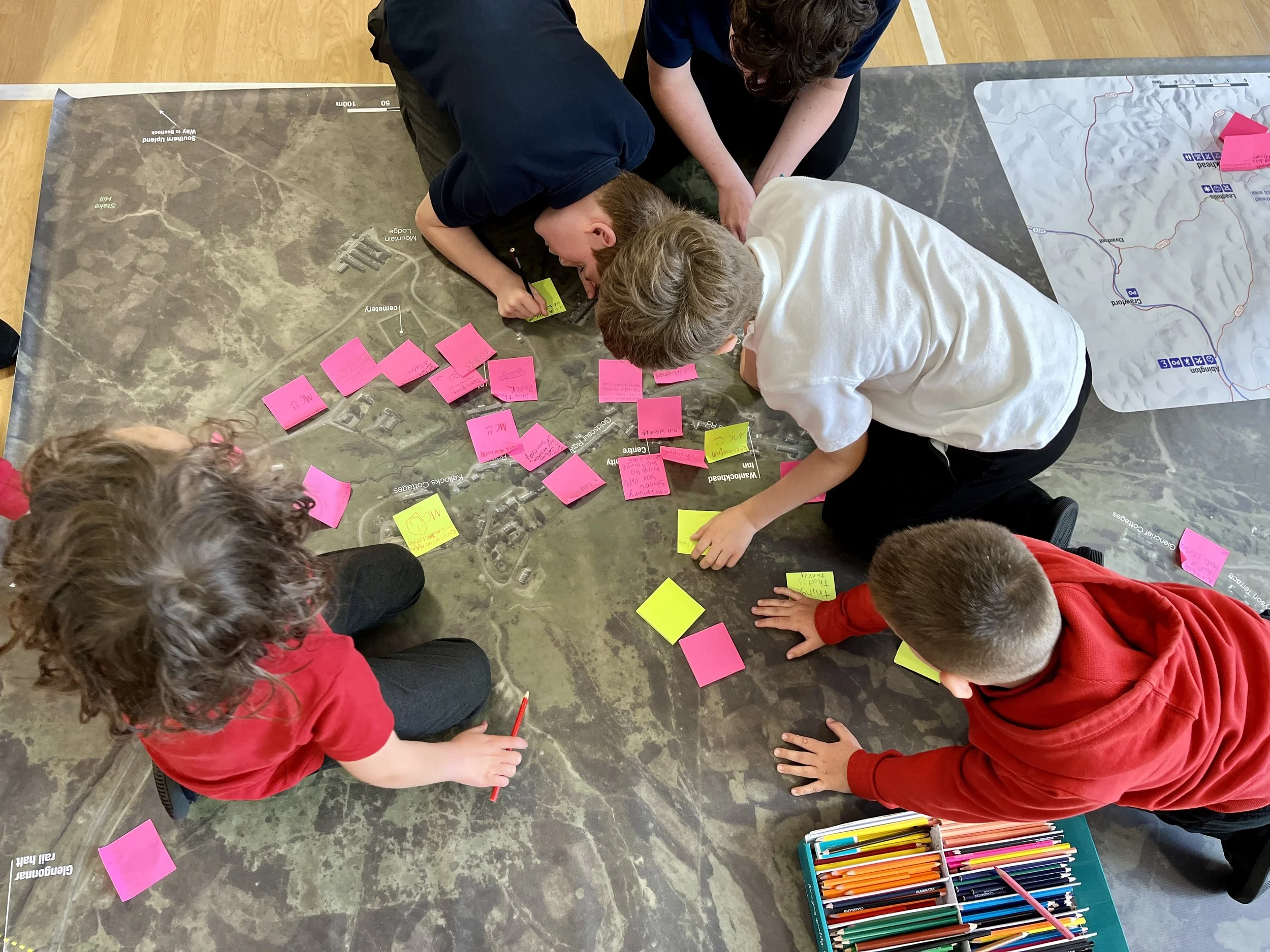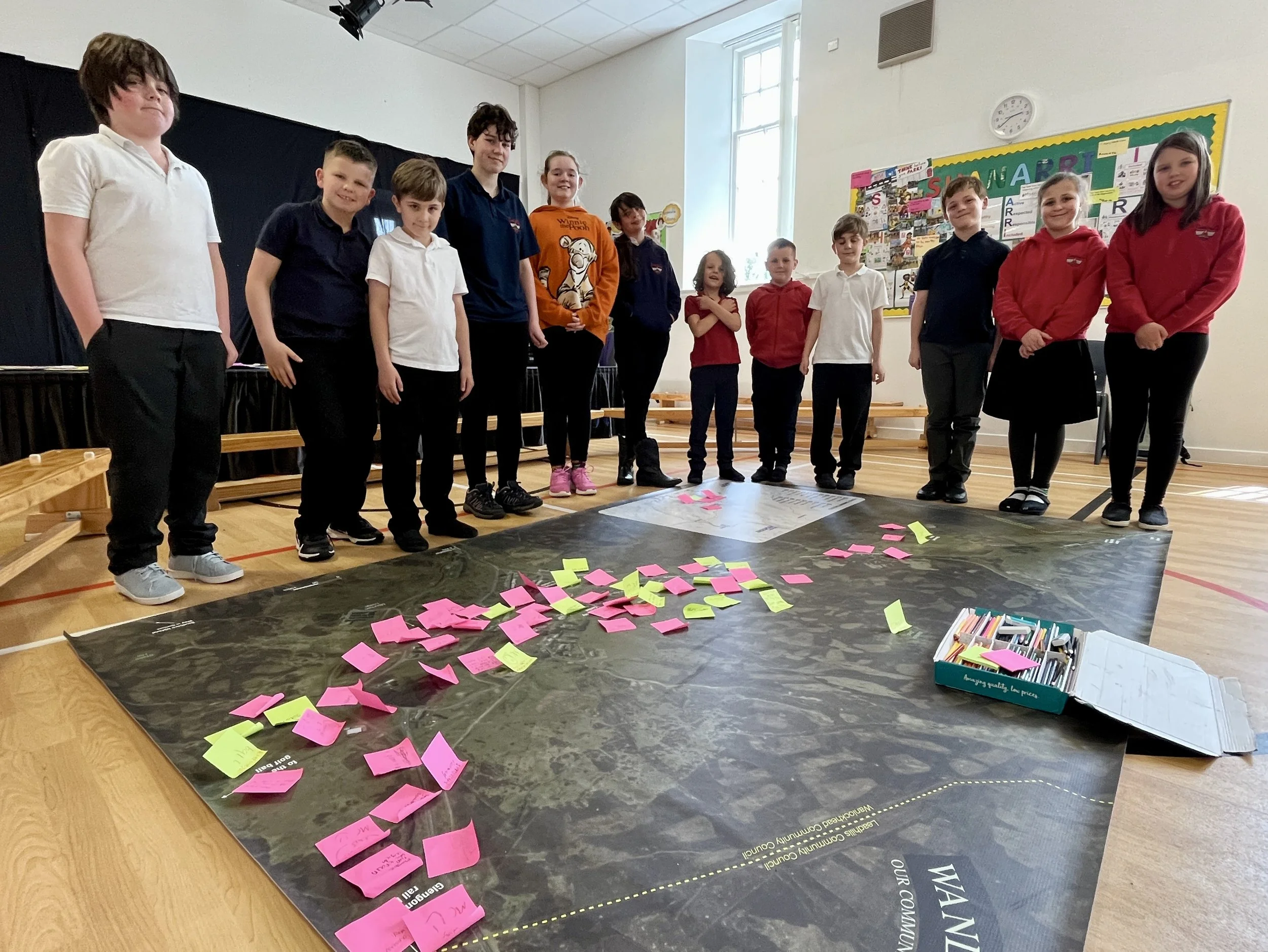
What next for Wanlockhead?
Now is a great opportunity for the village to decide its priorities & create a plan to implement them.
This is the village’s moment to come together and agree a shared future - with funding from Twentyshilling Community Benefit Fund through Wanlockhead Community Council to pay for an experienced impartial facilitator.
During 2025, the village will decide: what is most important for our community? And how do we make it happen?
By later in the year, based on ideas and discussion across the community, with people of all ages, the village will have a plan of action which can be used to:
Influence Dumfries and Galloway Council by the plan being registered as a Local Place Plan.
Guide what the village focuses its own energies on.
Steer how community benefit funding from local windfarms is spent.
Read on to find out how you can shape your place!
WHat’s this about?
This website has been created by the facilitator, Nick Wright, as a source of information and a way for people to get involved. He will update it as the plan is prepared through 2025.
“The only way that people will trust this process, and the plan that’s produced, is if everything is open and transparent, every step of the way - so everyone can see how their ideas feed into the plan, and how it reflects community priorities”, Nick says. “The plan mustn’t belong to me, or any individual group: it’s got to be everyone’s plan.”
To see what that means in practice, you can find out more about community-led planning and how it has helped other villages on the About page.
During 2025, there will be plenty of opportunities for everyone to shape the Plan: surveys, drop-in events, school activities and more.
That work will be split across a sequence of three stages:
Issues and ideas: What should the Plan should focus on? What are the communities’ priorities?
Action: what action should we take to tackle those priorities?
Plan: pulling everything together into a coherent plan for everyone to check and then finalise.
COMMUNITY SURVEY
The first step was a community survey delivered to every household in the village and available online - to give everybody the opportunity to say what they believe is important for the local community. Those priorities will form the foundation of the Plan, so it’s really important that they are representative of what the community wants.
Who responded?
About 150 people live in the village. There were 51 survey respondents, 41 of whom live in the village all the time.
Use the controls on the interactive graphic to explore respondents’ ages and where they live. One bubble represents one person.
There were a good number of responses from residents aged 45 to 75, but fewer from younger or older people.
Primary age children have had a dedicated session of their own in the school - scroll further down to see a fascinating map of their ideas.
CHALLENGES AND OPPORTUNITIES
The first main survey question asked people to say the relative importance of eight issues and opportunities for the local community. Landscape and wildlife came out top, followed by transport, facilities and services (for example, schools, healthcare and play parks), and housing.
The interactive graphic below shows the relative scoring for each of the issues. Remember that there were fewer responses from people younger than 45, who often place greater importance on things like jobs, money and climate change.
GOOD THINGS ABOUT WANLOCKHEAD
The second main survey question asked people what they like about Wanlockhead and the local community.
You can see a full transcription of everyone’s responses in the full survey report - and they make for really interesting reading.
The interactive diagram on the right summarises the main things people said they like. The bubbles are proportionate to the number of people mentioning a particular area; the number is written in each bubble. Tap or hover over each bubble for more information.
Friendly community spirit, peace and quiet, and beautiful scenery are the top “likes”.
Ideas and improvements
Finally, the survey asked:
What could be improved in the community, thinking particularly of the challenges and opportunities in the first question.
For ideas that people would like to see happen, and what they could do to help.
The diagram below summarises people’s answers, grouped together to show the main themes emerging. Remember, you can see a full transcription of everyone’s responses in the full survey report - which has lots more interesting details.
‘Getting about’ emerges as top priority, with road conditions and public transport being the two most-mentioned suggestions.
The way the community organises and supports itself is not far behind - with the Community Council, community spirit, and activities and events receiving the most mentions.
Environment and heritage (empty buildings, litter, mess, scrap etc) and community facilities and amenities (especially healthcare) are next most mentioned.
The need for more affordable homes and control over the number of holiday homes was mentioned by 20% of respondents.
Bear in mind that the balance between these suggestions might change with greater input from younger and older people, and other ideas are likely to emerge as we carry on through the process of preparing the Plan.
Read all about it…
To read more about the survey and see every single response, get yourself a cuppa and check out the full report below (or download it here). It’s a great read for anyone who cares about the village!
The point of doing a Plan like this is to plan for the future. By its very nature, it’s a long term activity. So the people who stand to benefit most from this Plan will be the community’s youngest residents.
In June 2025, local primary school pupils spent an afternoon thinking about their priorities for the community and what they would like to see in the Plan, then mapping those onto a giant map. The exercise included all pupils at Leadhills Primary School, whether they lived in Wanlockhead and Leadhills; all of them knew Wanlockhead well.
PRIMARY SCHOOL
You can see their ideas on the pink and green notes on the map below.
Many of the children’s suggestions mirror the adults’ survey responses, but there are also specific suggestions about improving the village play park - the one thing that every child suggested.
You’ve said what you think. Now let’s decide what to do.
The school ideas and survey results gives clear pointers about what the plan should focus on.
Since then, we’ve been asking what actions should happen to tackle those priorities, as well as trying to engage more people in their teens, twenties and thirties. As well as doorstep chats and going along to the Community Lunch and other activities, two informal drop-in sessions took place in the Community Centre - on Monday 22nd September 3pm to 8pm and Saturday 4th October 10am to 3pm. A dozen residents popped in for a chat.
You can see the display boards that were presented at the drop-in events below. They suggest potential actions to include in the Plan based on the survey results and schoolchildren’s ideas, intended to get people thinking and stimulate comment.
The comments added by people at the drop-in events are shown on the pink notes (from the first event) and green notes (from the second event).
If you’d like to add more comments, please contact the facilitator, Nick Wright. His contact details are at the bottom of this page. All suggestions are welcome!
The FINAL RUN-IN…
Before Christmas, the final stage will be to draft the Plan based on all the work this year, and share it publicly for feedback. It will then be updated and submitted to Dumfries and Galloway Council for registration.
The Plan will then become the village’s manifesto for the future - to support and steer community action, planning policy, how community benefit money from windfarm is spent, public services and more.













